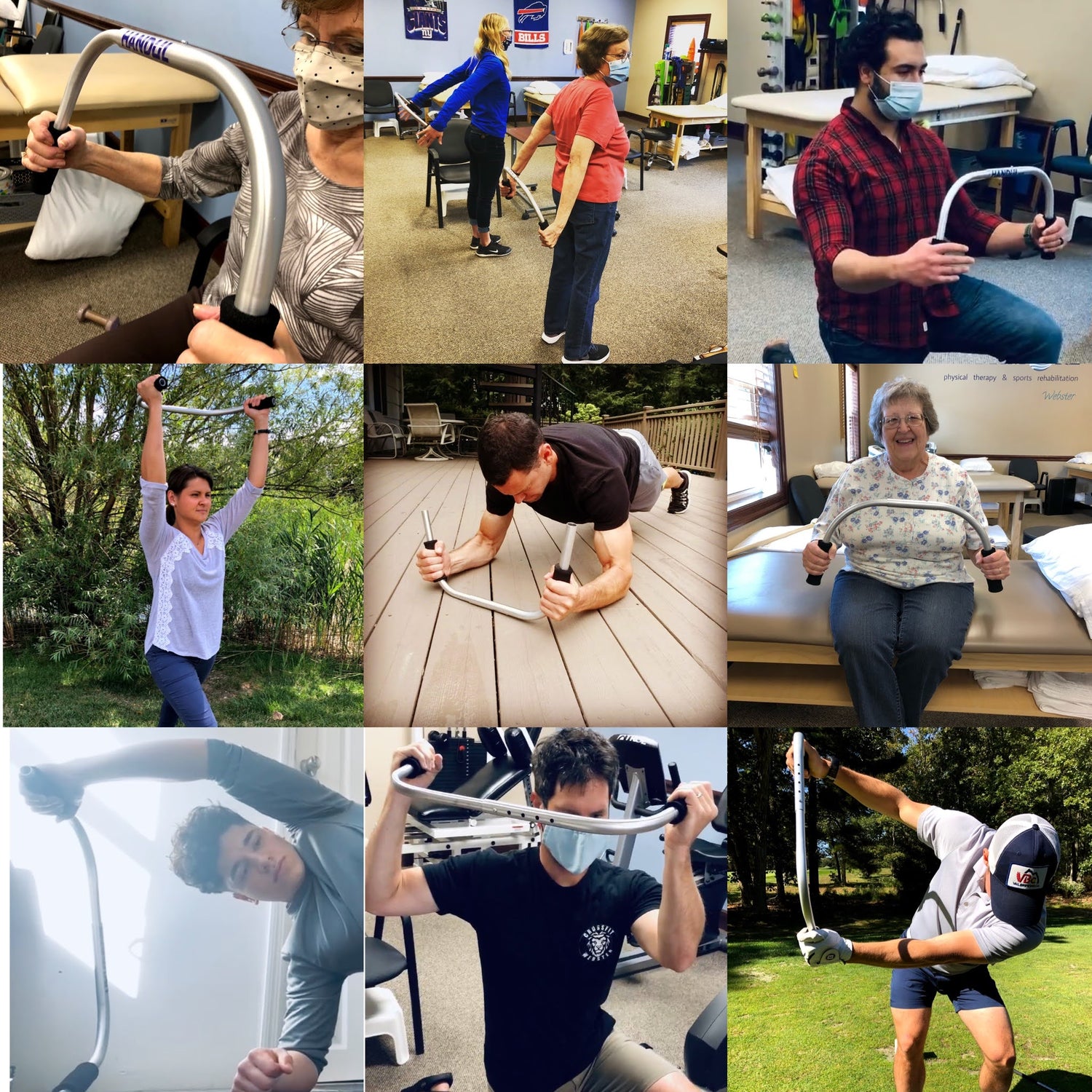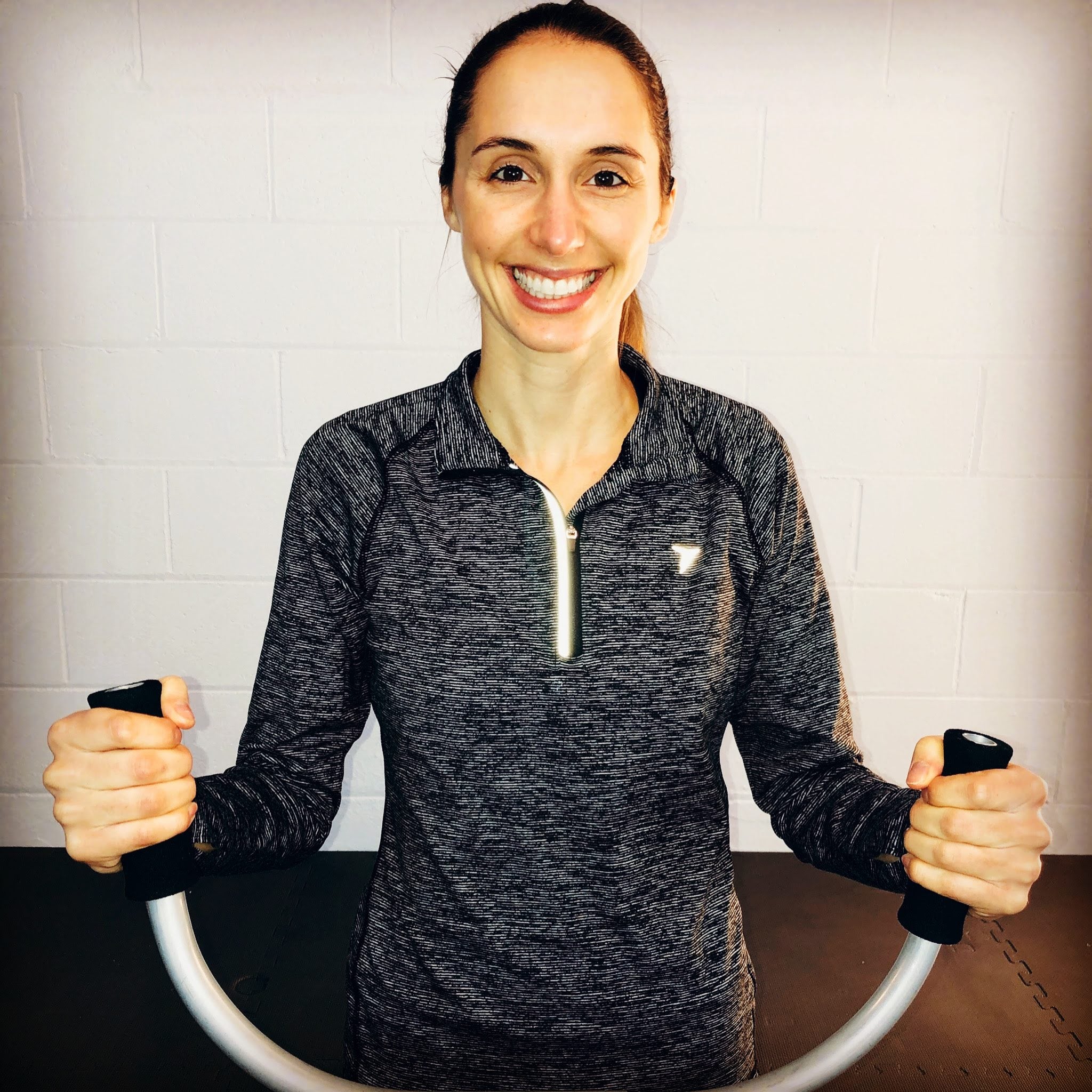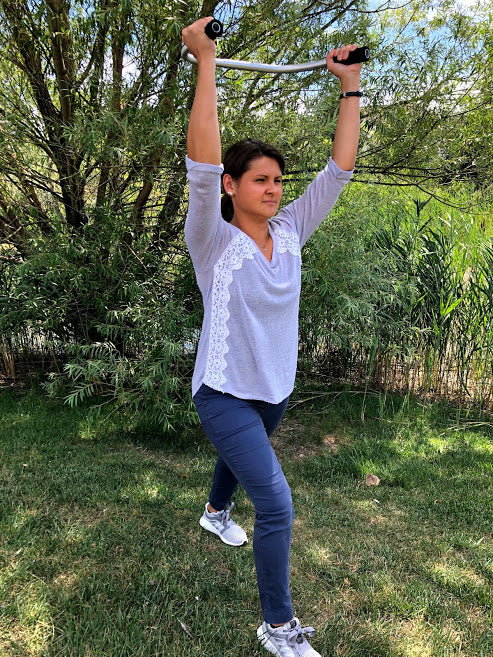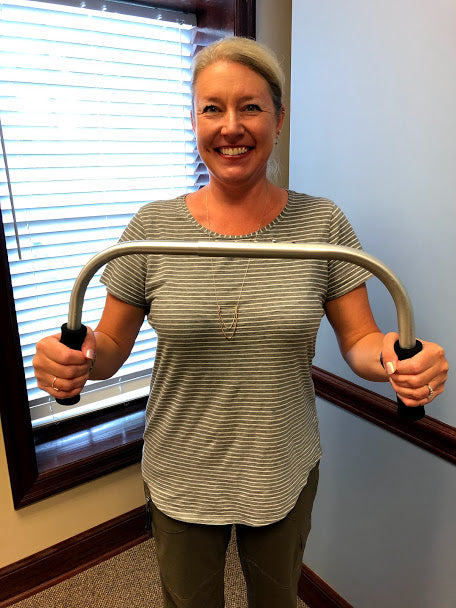SHOULDER PAIN? HANDUL IT.

USED IN REHABILITATION CLINICS AND HOMES ACROSS THE COUNTRY
WELCOME TO THE HANDUL BAR

7/10 PEOPLE HAVE SHOULDER PAIN
Let’s change that by making shoulder strengthening as simple as brushing your teeth so you and your patients can get back to doing what’s important in life.
EXERCISE HANDOUTS INCLUDED WITH PURCHASE
PRODUCTS
-
CLINICIAN COURSE: Using Isometrics to Decrease Shoulder Pain, Improve Strength, and Regenerate Tendinopathy
Regular price $49.99 USDRegular priceUnit price / per$75.00 USDSale price $49.99 USDSale -
 Sale
SaleThe Handul Bar
Regular price $84.99 USDRegular priceUnit price / per$125.00 USDSale price $84.99 USDSale
THE HANDUL BAR APPROACH TO SHOULDER PAIN
Sometimes complex questions have simple answers.
For example - how do we stop the spread of common diseases?
We found it can be as simple as washing your hands regularly or sneezing into your sleeve.
Likewise, lifetime prevalence of shoulder pain is 7/10 people.
How do we decrease the incidence of shoulder pain?
We believe it comes down to a regular practice of strengthening key shoulder and core musculature in multiple positions.
It’s well established that exercise is medicine, meaning that if the benefits of exercise could be put into a pill it would be the most widely prescribed pill in the world.
However, even the best medicine, if not dosed correctly, does not work.
If exercise is medicine, how do we dose it to get the benefits?
We have found that isometric exercise is a great way to dose exercise correctly to improve strength, decrease pain, and improve mind muscle connection.
Isometrics are great for dosing because they are self limiting. The person can only push whatever their intention allows.
Research has shown that intention directly impacts the muscle quality you’re trying to improve.
- Strength: 80-100% effort for short durations, less than 6 seconds, long rest
- Pain reduction: 30-70% effort for longer durations, 20-45 seconds,
- Endurance: 30-70% effort for long durations, 45 seconds to 5 minutes
One key to getting the benefits of exercise is choosing the right load or resistance to challenge a particular muscle to adapt and get stronger.
In the world of physical therapy and strength and conditioning, initially choosing the right load for a client is a lot of guesswork.
It’s looking at the person in front of you, estimating what they can/can’t do, have them try it, see how it feels, and then go from there.
Sometimes you guess right, sometimes you’re wrong. Sometimes you overdose them, sometimes you underdose them.
Imagine you’re a physician and your patient has headaches. You look at them, size them up a bit and say, “I bet you could handle 200 pills of Tylenol per day. Let’s try that.”
More medicine isn’t better than the right dose. More exercise isn’t better than the right dose.
Isometrics and the handul bar help you to find the right dose of exercise to improve shoulder strength and reduce shoulder pain.
Another key to getting the benefits of exercise is consistency.
Most people in the United States brush their teeth regularly. Most people do not exercise regularly.
In order to decrease the incidence of shoulder pain, we need to make shoulder strengthening as simple as brushing your teeth.
That’s where the handul bar comes in. The handul bar is like a toothbrush for shoulders.
I am a full time clinician and use bands and weights as well to strengthen patients, but for home exercises in order to actually get someone stronger you need the right progressively increasing option of bands and weights. You also need an anchor point for a lot of band exercises. You may also need different band and dumbbell resistances for different muscles.
The more complex it gets for a patient, the more deterrents there are from creating a positive and sustainable behavior change.
With the handul bar and isometrics, you only need one tool because it gets stronger with you. One simple adjustable tool, kept by your toothbrush, and habit stacked with your dental hygiene approach.
This is our answer to decreasing the lifetime prevalence of shoulder pain. We have implemented this approach to many patients with great results.
Tooth brushing did not become popular in the US until after World War II. We at the handul bar believe that we can be the change to empower people to improve their shoulder health regularly and improve everyone’s quality of life.
Thank you for being a part of the future of shoulder health.

FEEL STRONGER
“It’s super lightweight but strong. It looks easy but man do I feel the muscles working. It feels good to move again!” - Andrea V.

SLEEP BETTER
“I used to have pain at night sleeping but that’s improved tremendously. The idea behind the Shoulder Hygiene Approach with the Handul bar made so much sense. The exercises were simple yet very effective.” - Dave D.

SIMPLE YET IMPACTFUL
“I’ve tried anti-inflammatories, ice, heat, and some stretches I found online but nothing was helping my shoulder pain. It wasn’t until I found the handul bar that things started to change. The handul bar itself is great but reading the ebook on how to do my own self massage and incorporate in breathing techniques helped me a ton. I’d recommend the handul bar to anyone looking to decrease their shoulder pain and feel stronger.”
10% OFF YOUR PURCHASE WHEN YOU SUBSCRIBE
AND 2 free HANDUL bar ebooks when you place your order 🥳




